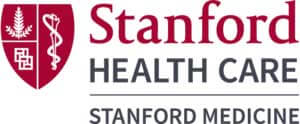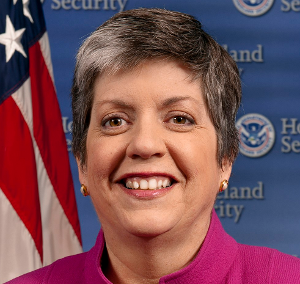Q: How did you become interested in genomic and transcriptomic research?
A: My undergraduate degrees are in chemistry and molecular biology, and my graduate work at Caltech focused on building small molecules to site-specifically target DNA. I have spent the last 20 years working in genomics starting with development of microarray technologies for low cost, bioelectronic DNA detection at Clinical Micro Sensors (CMS) in Pasadena, CA. This eSensor platform is the basis of GenMark Diagnostics today. I am a big believer that genomic information should be routinely employed in the management of disease, and I founded DxTerity with the goal of bringing genomics to everyday care. Our DxDirect Genomics Platform and DxCollect Fingerstick Collection Kit enable low cost, from home genomic testing and monitoring.
Q: What was the first DNA test that you developed?
A: A multiplex Cystic Fibrosis SNP test on the eSensor platform while at Clinical Micro Sensors.
Q: What are the challenges facing human genomic research today?
A: The biggest challenges are completing the clinical studies needed to demonstrate the clinical validity, clinical utility, and economic value of promising genomic tests, as well as obtaining regulatory clearance and reimbursement. Many of the most promising genomic tests are multi-gene panels that rely on a complex algorithm to make a non-obvious medical determination. Large-scale studies are needed to prove value, and the traditional multi-site, KOL-led studies are too expensive and slow. DxTerity’s foray into Direct-to-Patient studies, as well as high-quality, FDA-compliant product development, look to overcome these challenges and enable rapid, cost-effective commercialization of diagnostic tests.
Q: What are the benefits of DxTerity’s Direct-to-Patient platform for genomic research?
A: DxTerity provides much needed innovation to genomic research by offering unprecedented access to patient samples. DxTerity’s Direct-to-Patient (D2P) platform uses a single centralized Institutional Review Board (IRB), nationwide digital recruitment of patient cohorts, and “from home” sampling of participants to dramatically lower the resource and financial burden of clinical studies for both the test developer and participant. With our D2P platform, the patient is the site, and sampling and monitoring can be preformed anytime, anywhere, on anyone. This streamlined, integrated approach makes large-scale longitudinal studies economically feasible. By driving down the cost to accessing participants, and collecting samples more frequently from larger cohorts, DxTerity’s D2P platform provides the ability to gain a much higher resolution picture of disease activity and therapy response. Plus, studies can be performed on an accelerated timeframe. Organizations could enroll patients and begin a study in months, and gather data in record time.
Q: Can you give an example of a recent study that the Direct-to-Patient platform was used to collect genomic data?
A: The LIFT Study, or Lupus Interval Monitoring to Manage Disease Flare and Enable Treatment Optimization, was an observational research study that, utilizing DxTerity’s D2P platform and the DxCollect fingerstick kit, recruited 1,000 participants in less than 6 weeks via online efforts. Participants provided three self-collected fingerstick blood samples using our DxCollect kit and returned them by standard U.S. mail. We had a 97% success rate for determining Interferon High/Low status on the basis of a gene expression signature.
Q: What are the challenges that the field of genomic research will face in the next five years?
A: Testing at the genome/transcriptome level is readily available. The next challenge is making it medically available at a reasonable cost, and integrating it in wearables and patient-reported data to enable cost effective, from home monitoring. At the same time, we need to navigate the FDA, insurance providers, and the medical community at large to delineate a reasonable, expedient pathway for the validation and reimbursement of promising tests and patient management offerings. Managed care providers, pharmaceutical companies, and the US government can play key roles by making clinical samples available that can be used to validate the performance of new tests.
Q: You joined CMS shortly after receiving your PhD in chemistry from Caltech. What advice can you give to young scientists considering an industry career?
A: There has never been a better time to join the field of genomics research. Advances in genomic technologies and a patient-centric approach to clinical sampling will usher in a new renaissance of large-scale, low-cost clinical studies that advance discovery and innovation in precision medicine and chronic disease monitoring and treatment. Be thorough, thoughtful, and passionate about your work, and remember the “why” behind what you do: the use of genomic profiling for chronic disease monitoring could someday help improve the quality of life for patients living with chronic diseases.
The Precision Medicine World Conference (PMWC), in its 17th installment, will take place in the Santa Clara Convention Center (Silicon Valley) on January 21-24, 2020. The program will traverse innovative technologies, thriving initiatives, and clinical case studies that enable the translation of precision medicine into direct improvements in health care. Conference attendees will have an opportunity to learn first-hand about the latest developments and advancements in precision medicine and cutting-edge new strategies and solutions that are changing how patients are treated.
See 2019 Agenda highlights:
- Five tracks will showcase sessions on the latest advancements in precision medicine which include, but are not limited to:
- AI & Data Science Showcase
- Clinical & Research Tools Showcase
- Clinical Dx Showcase
- Creating Clinical Value with Liquid Biopsy ctDNA, etc.
- Digital Health/Health and Wellness
- Digital Phenotyping
- Diversity in Precision Medicine
- Drug Development (PPPs)
- Early Days of Life Sequencing
- Emerging Technologies in PM
- Emerging Therapeutic Showcase
- FDA Efforts to Accelerate PM
- Gene Editing
- Genomic Profiling Showcase
- Immunotherapy Sessions & Showcase
- Implementation into Health Care Delivery
- Large Scale Bio-data Resources to Support Drug Development (PPPs)
- Microbial Profiling Showcase
- Microbiome
- Neoantigens
- Next-Gen. Workforce of PM
- Non-Clinical Services Showcase
- Pharmacogenomics
- Point-of Care Dx Platform
- Precision Public Health
- Rare Disease Diagnosis
- Resilience
- Robust Clinical Decision Support Tools
- Wellness and Aging Showcase
See 2019 Agenda highlights:
- Five tracks will showcase sessions on the latest advancements in precision medicine which include, but are not limited to:
- AI & Data Science Showcase
- Clinical & Research Tools Showcase
- Clinical Dx Showcase
- Creating Clinical Value with Liquid Biopsy ctDNA, etc.
- Digital Health/Health and Wellness
- Digital Phenotyping
- Diversity in Precision Medicine
- Drug Development (PPPs)
- Early Days of Life Sequencing
- Emerging Technologies in PM
- Emerging Therapeutic Showcase
- FDA Efforts to Accelerate PM
- Gene Editing / CRISPR
- Genomic Profiling Showcase
- Immunotherapy Sessions & Showcase
- Implementation into Health Care Delivery
- Large Scale Bio-data Resources to Support Drug Development (PPPs)
- Microbial Profiling Showcase
- Microbiome
- Neoantigens
- Next-Gen. Workforce of PM
- Non-Clinical Services Showcase
- Pharmacogenomics
- Point-of Care Dx Platform
- Precision Public Health
- Rare Disease Diagnosis
- Resilience
- Robust Clinical Decision Support Tools
- Wellness and Aging Showcase
- A lineup of 450+ highly regarded speakers featuring pioneering researchers and authorities across the healthcare and biotechnology sectors
- Luminary and Pioneer Awards, honoring individuals who contributed, and continue to contribute, to the field of Precision Medicine
- 2000+ multidisciplinary attendees, from across the entire spectrum of healthcare, representing different types of companies, technologies, and medical centers with leadership roles in precision medicine












